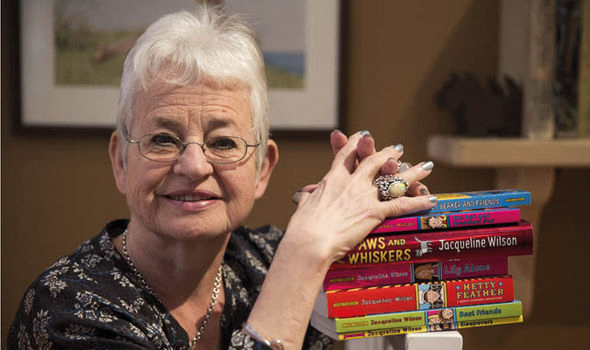
Every girl (and a handful of boys) who was raised in either Ireland or Great Britain in the last twenty seven years knows the name. It lined every bookshelf, from libraries to schools to homes. Nick Sharrat’s illustrated black dot eyes haunt all of our memories. The name is Jaqueline Wilson and she did not come to play when she started writing children’s books back in 1991 with The Story of Tracy Beaker.
Now her legacy is to stand the test of time, awarded an OBE in 2002 and becoming Dame Jaqueline Wilson in 2008. Four of her books appear on the BBC’s Big Read Poll of the “100 most popular books in the UK”. She is still releasing children’s novels to this day, opening the gateway to the joys of reading for a younger generation.
Although, Jaqueline Wilson is not exactly like your typical children’s author. She deals with darker subject matters than other children’s books, straying away from fantasies about fairies or stories about a troublesome child who torments his younger brother. Wilson’s stories explored themes such as broken families, domestic abuse, mental illnesses, and the foster care system.
Wilson opened an entire new world to young readers, it was the first, tepid step into adulthood where the rose-tinted glasses were snatched off your face and suddenly the world in all its bleakness was finally revealed to you. It helped children with more privileged backgrounds learn about what life is like outside of their cushy home in the suburbs. Wilson delved into the lives of children whose biggest problem was not that they didn’t want to do their homework. She educated them on the effects of classism, mental illnesses such as bipolar disorder in the Illustrated Mum and domestic abuse in Lola Rose that, in turn, helped children empathise and have a greater understanding of the world.
Not only is Wilson is teaching children about other, difficult situations they might not have been privy too before but she is also giving children from disadvantaged backgrounds a character they can relate too. Children who may have felt voiceless in the world of fiction ere now given a voice, made them feel less alone. This stemmed fom Wilson’s own unhappy childhood back in the 50s, where she felt books presented an idealised world. “Children’s books back then presented a world where parents didn’t argue,” she said in an interview with the Guardian,“My parents argued every day, about practically everything.”
Her characters are always relatable to children, having two distinct archetypes in her novels. There’s the shy, quiet girl or the plucky, mischievous girl although fitting those archetypes, each character had its own layers that made them unique. By having the two archetypes, people could find aspects of themselves and fit themselves into either one. This helped bring the emotional impact that happened near the climax of their novels home as the reader would almost feel like the events happening were happening to them too.
“I cried at the end of My Sister Jodie,” said Róise McGagh, an avid Jaqueline Wilson reader back in the day. “It made me really appreciate my sister”.
My Sister Jodie ended with the aforementioned Jodie falling to her death from a castle. Apologies for spoilers but do you really want to a child’s book?
Jaqueline Wilson is an inspirational author who will continue to open the minds and hearts of young readers for decades to come.
Aoibhín Bryant
Image Credit: The Daily Express
